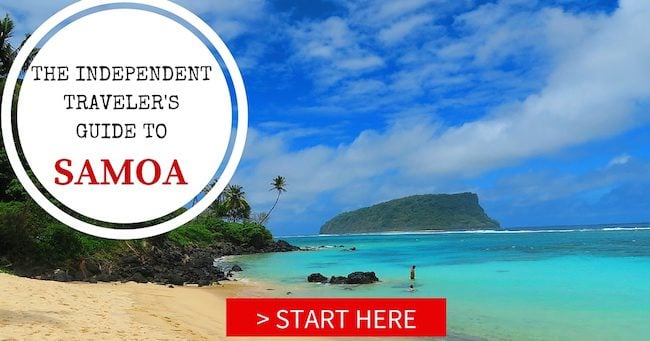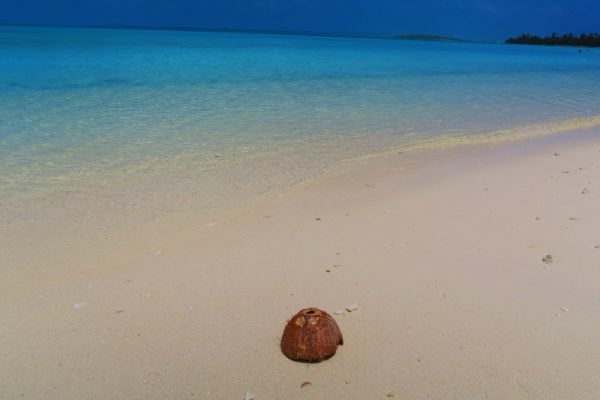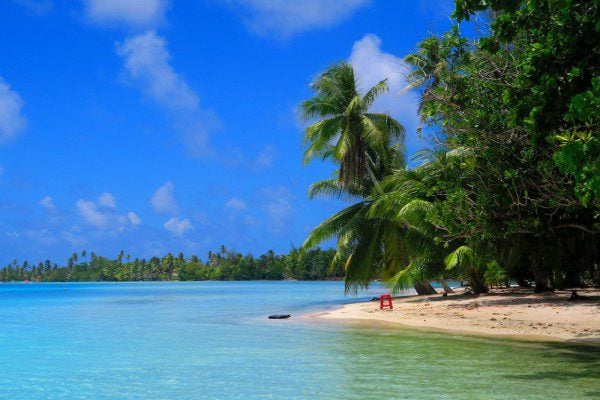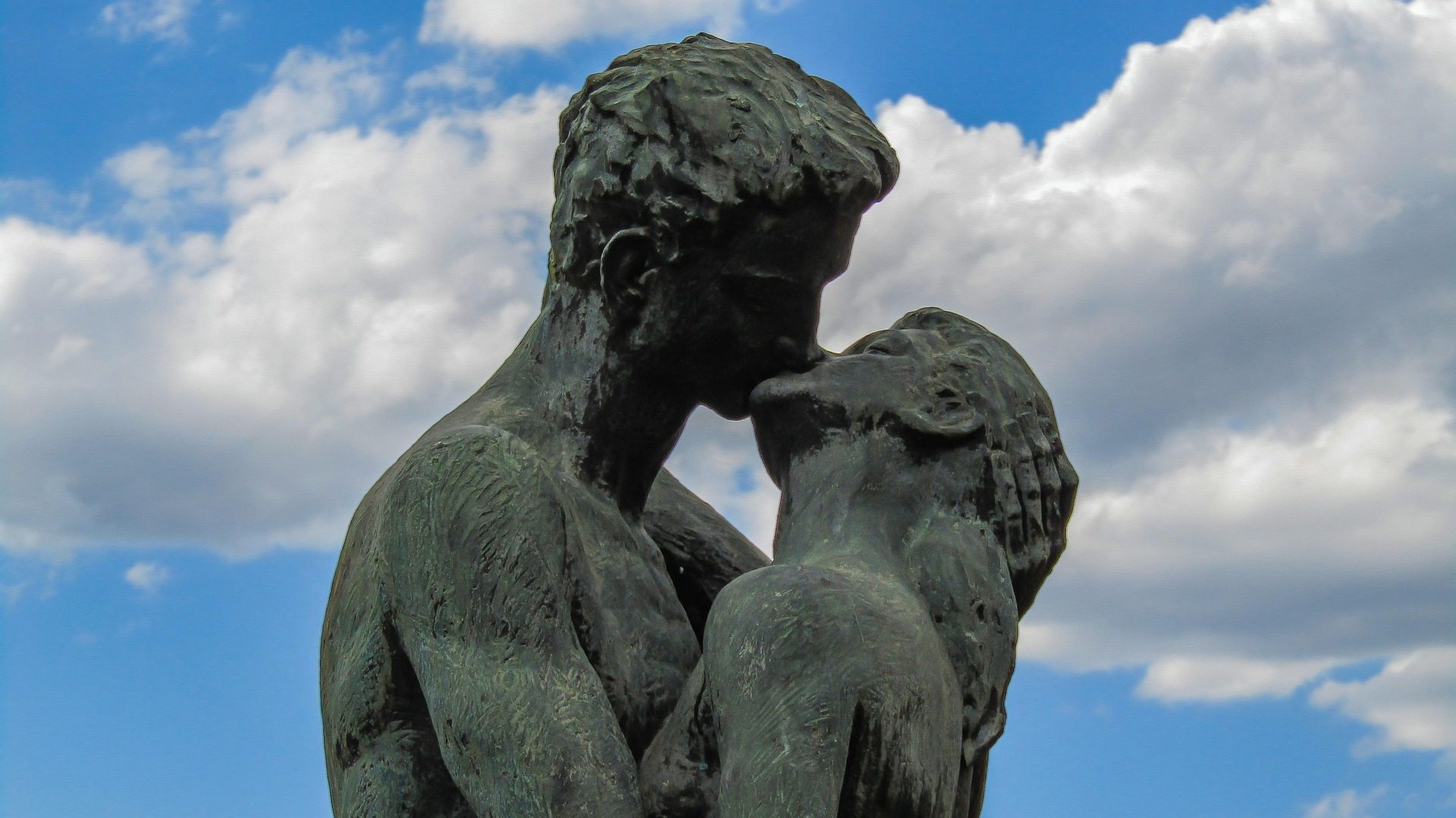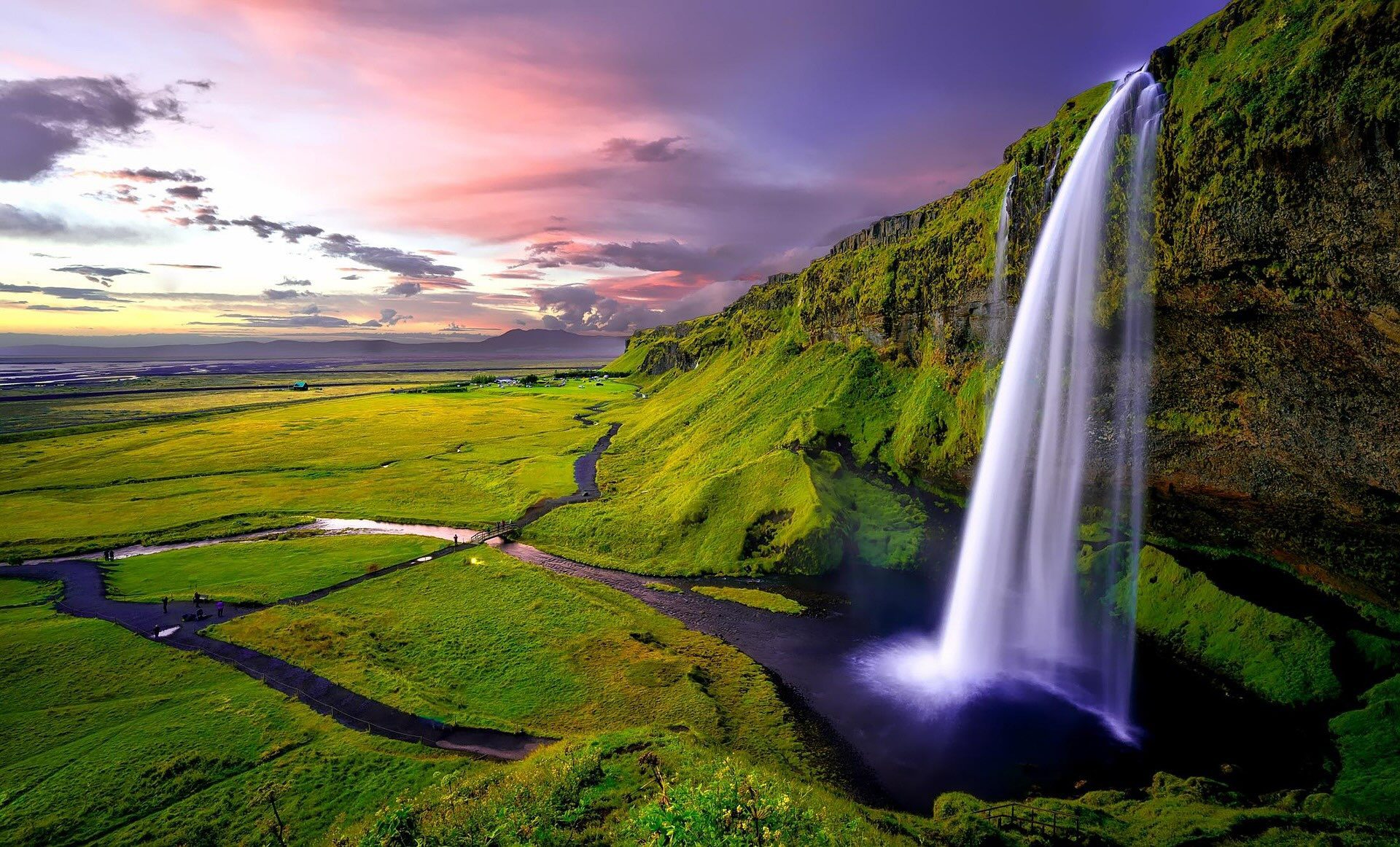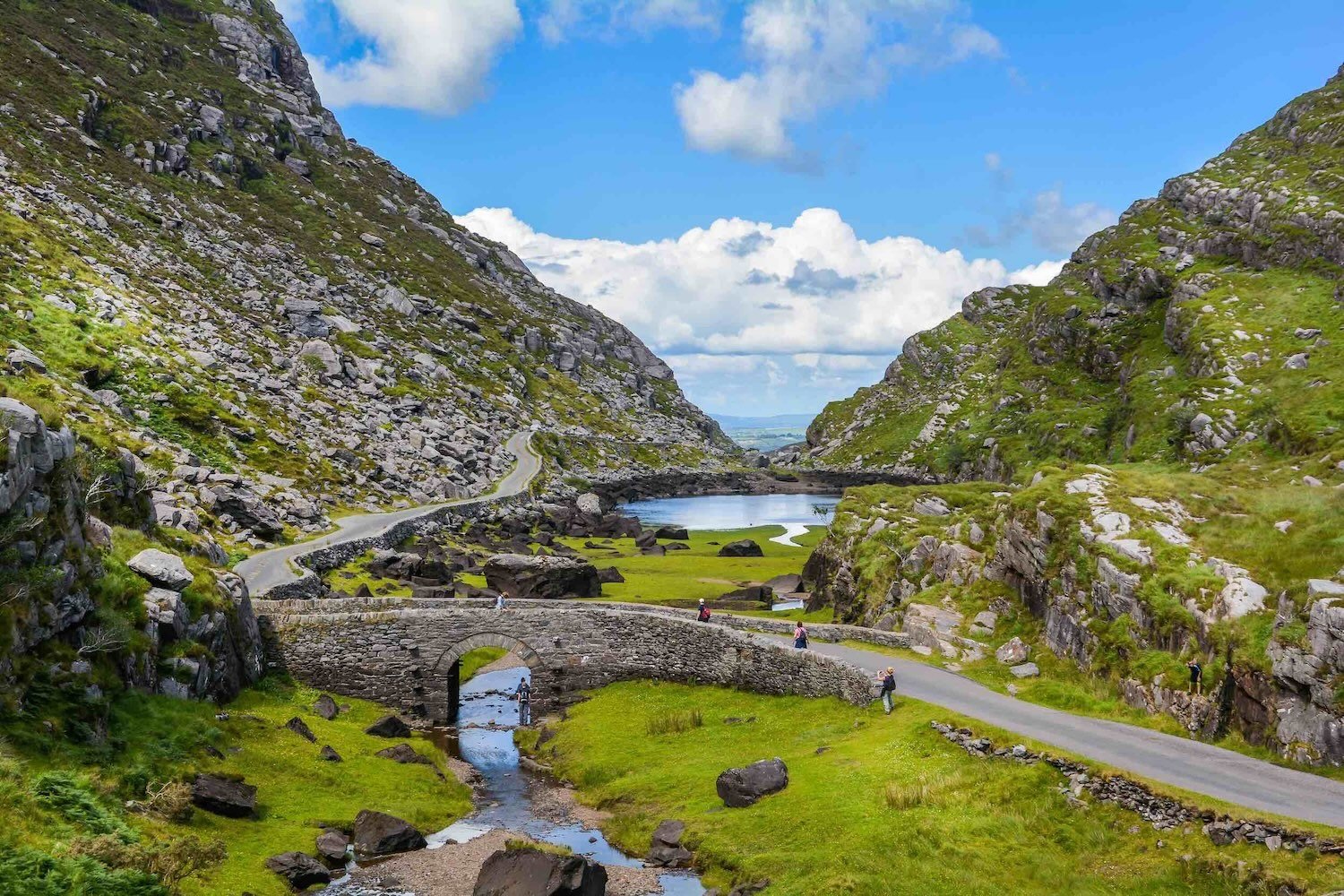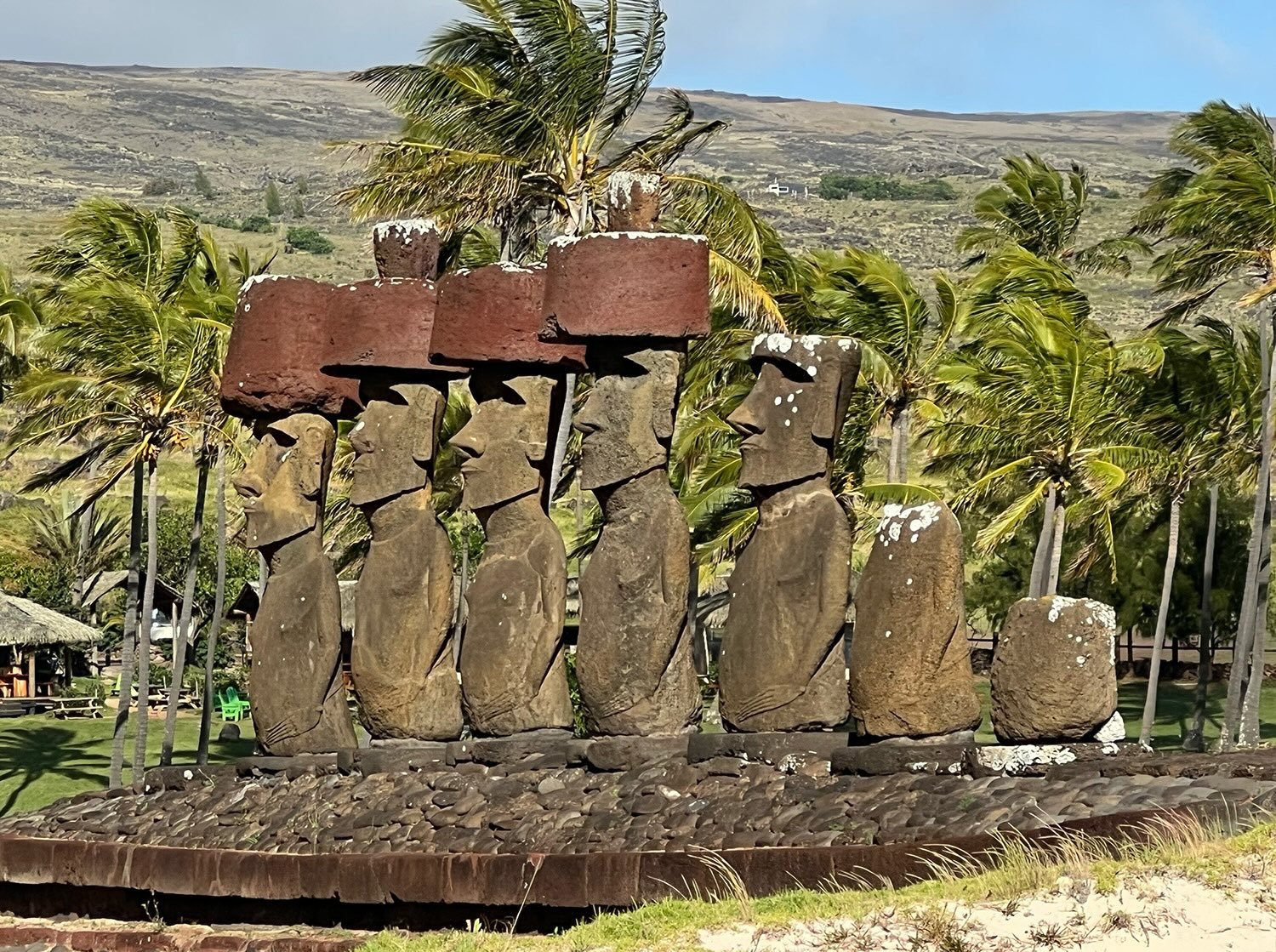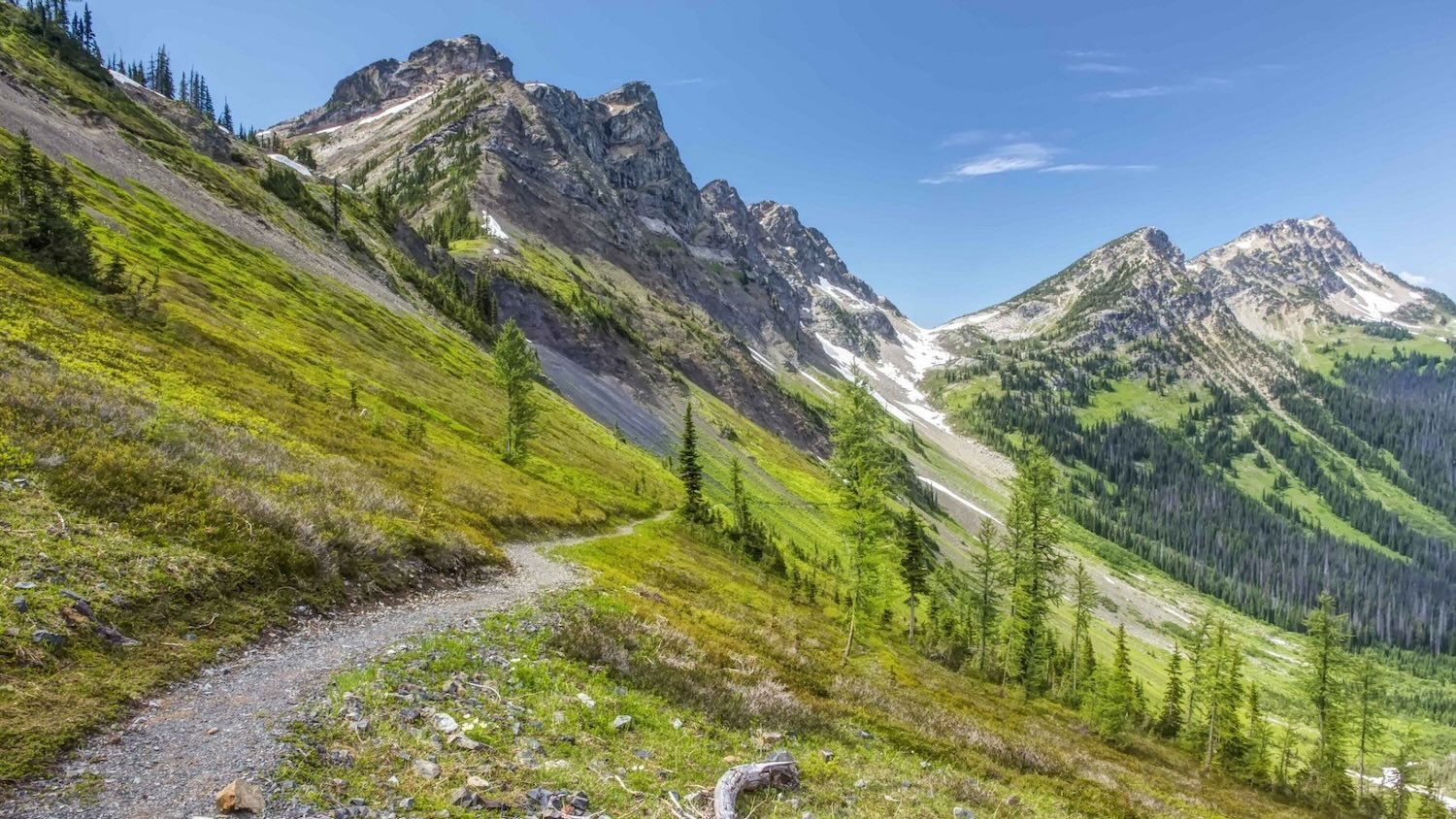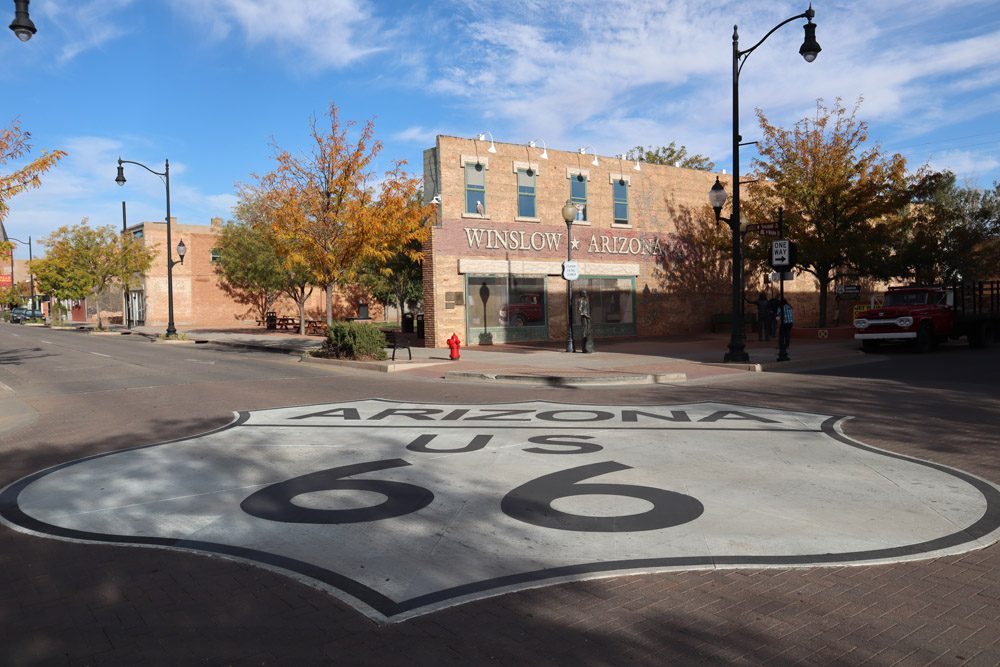Tropical Beach Hopping In Samoa
Last week, I celebrated a month on the road since starting my journey across the South Pacific islands. I was hoping that time ticks at a slower pace down here but it turns out that it’s still flying by. Some of my friends were asking me before I left, how on earth I would be able to spend months just beach bumming? The truth is that there’s always so much to see and your beach bumming level is totally up to you. Last week, I arrived in Samoa and spent the first few days checking out its capital city Apia on the main island called Upolu, before settling in Lalomanu Beach for a few days. In this post, we’ll check out Upolu’s southern coast, known for its palm fringed white sand beaches. Ready to go beach hopping in Samoa?
Visiting Samoa? Start planning your trip to paradise with this in-depth Samoa Travel Guide!
Lalomanu Beach
Lalomanu Beach is a beautiful strip of white sand, dotted with palm trees growing in all possible angles. In 2009, an 8.1 magnitude earthquake shook the South Pacific, sending tsunami waves towards Samoa. Lalomanu was badly hit by the waves that claimed the lives of dozens and destroyed the reef that used to be here.
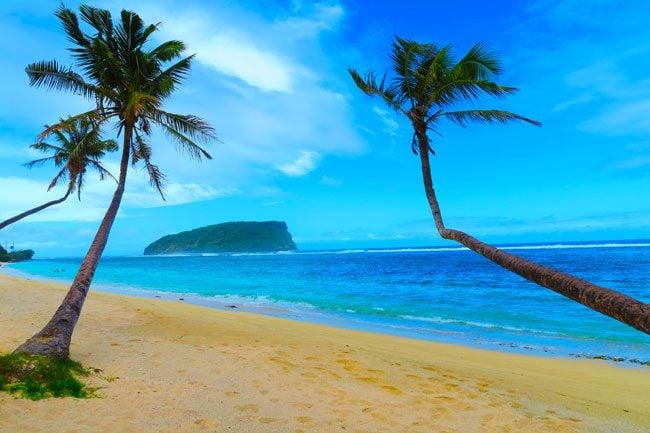
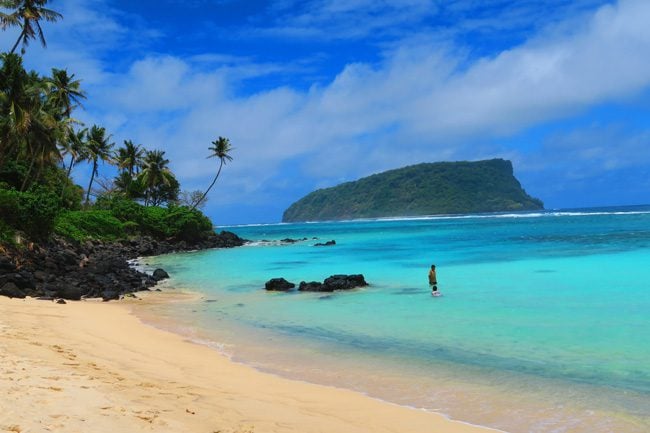
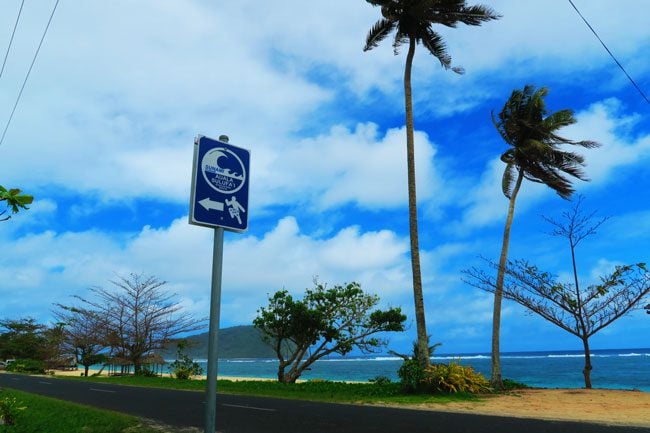
Despite the tragedy, the locals have quickly moved on in true Samoan fashion and despite the lack of excitement beneath the waves, the water is so crystal clear. I spent a few days at Taufua Beach Fales, a family business as is most often the case in Samoa. This was my first time staying in a fale (fa-le), a traditional Samoan hut that’s ubiquitous throughout the country. You can choose between a closed or open fale and whatever your choice may be, sweet dreams are guaranteed with the ocean waves putting you to bed at night. Breakfasts and dinners are served buffet style and the food doesn’t stop coming out of the kitchen until the last guest begs them to stop.
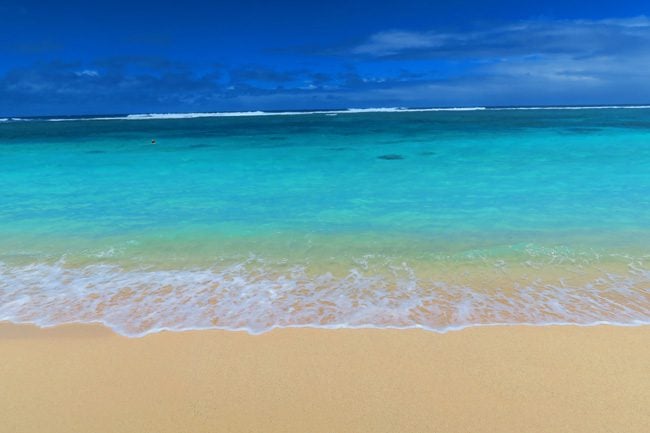
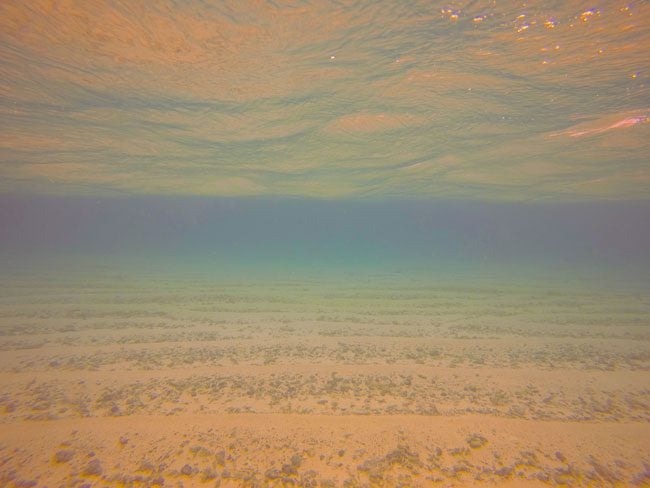
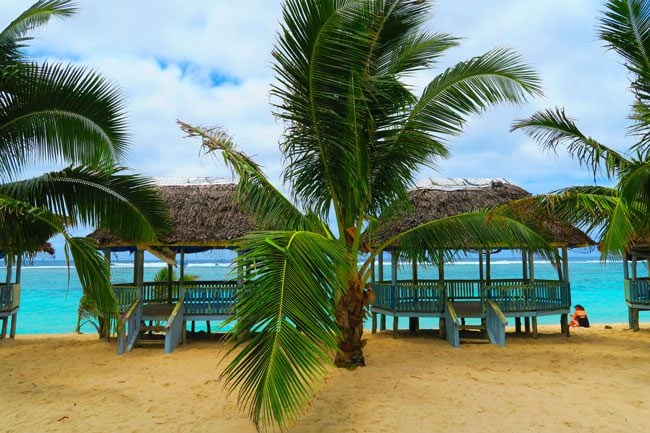
Polynesian Dancing 101
In a country that doesn’t see too many backpackers, Lalomanu Beach is pretty much a guaranteed stop for those who made it. And where there are backpackers, there will always be partying, dancing and of course… happy hour! The best day to visit is on Saturday, known as ‘happy day’ around here. The highlight is the evening show, comprised of traditional Polynesian dancing and unbelievably skillful fire dancing. I recall that back in Apia, I learned that pretty much all Samoans know how to dance, but I didn’t know they could also play with fire! The Samoan traditional dance is so different than what I saw in Vanuatu. This just goes to show you what a few hundred miles of ocean can do to cultures.
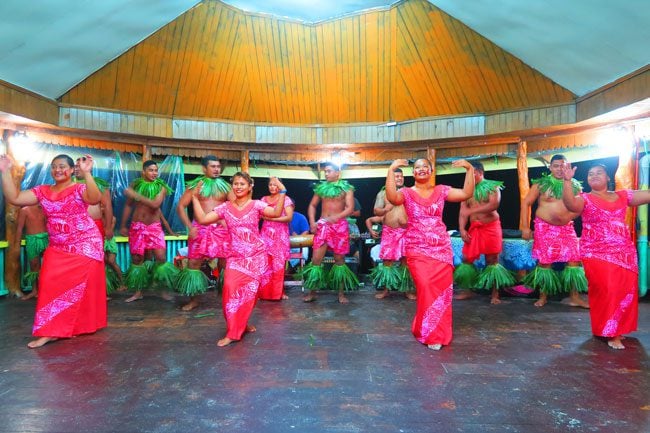
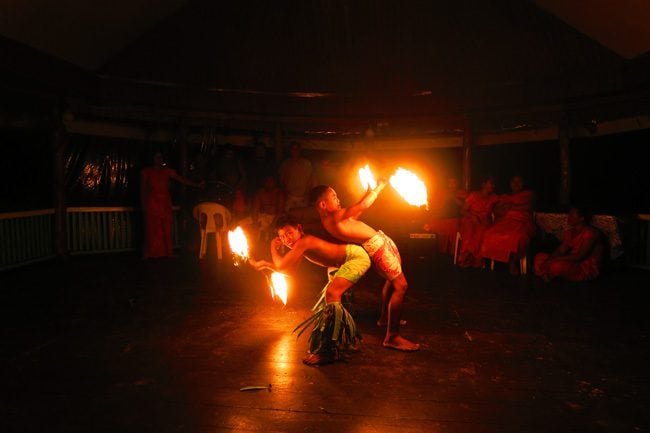
Guests were also treated to a quick class of ‘Polynesian Dancing 101’. I’ll save you from the horror of seeing me in action and pretend there were no photos taken of this forgetful performance…
Waterfalls & Sea Trenches
Aside from drinking cocktails and lying on the beach, there were two cool spots nearby that rightfully required getting off the beach. First off was Togitogiga Waterfall, a name that is pretty cool to say out loud once you get the hang of it. It’s a series of small waterfalls, cascading down to freshwater pools.
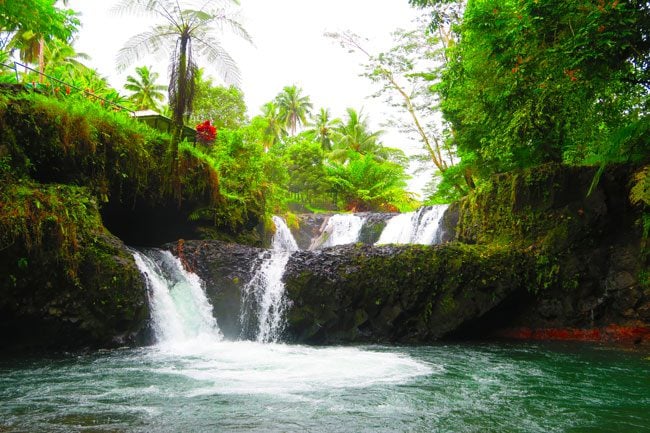
Visitors to Samoa will surely recognize the next spot from postcards and promotional material – and there’s a good reason for it. You can’t really say you’ve been to Samoa until you’ve paid a visit to the Tu Sua Ocean Trench. This place is absolutely magical with two massive sinkholes joined together by a lava tube and filled with crystal clear blue water.
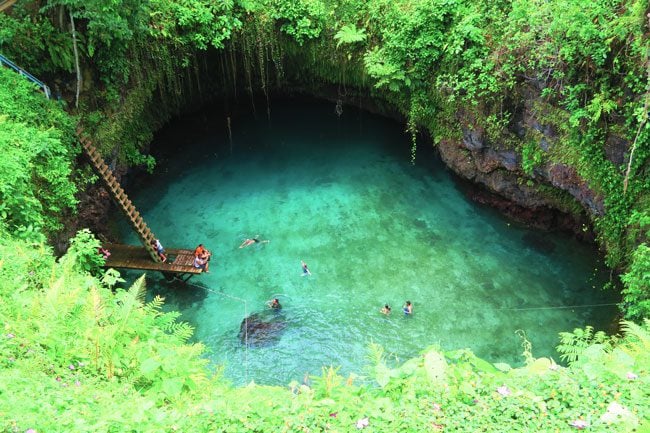
Climbing down the ladder might be a bit challenging, but no one can resist the opportunity of splashing down in this one-of-a-kind pool. Water is fed by underground ocean currents and the view of the Pacific from up top is not too bad either.
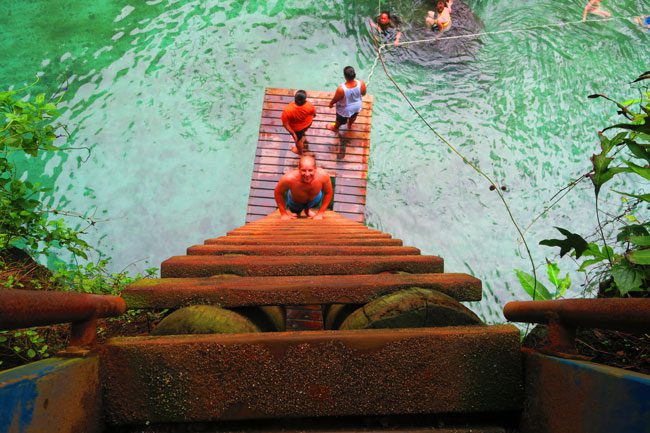
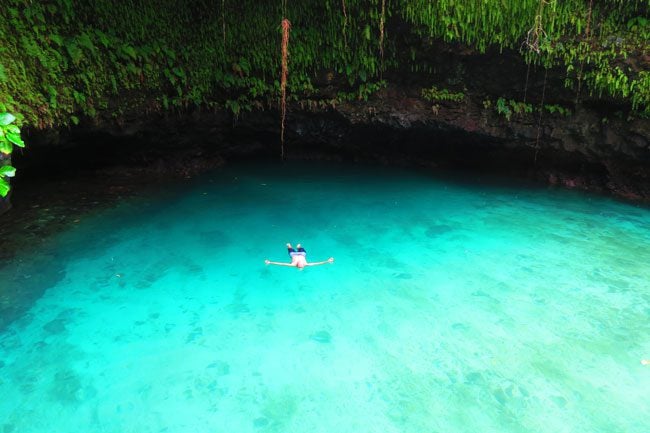
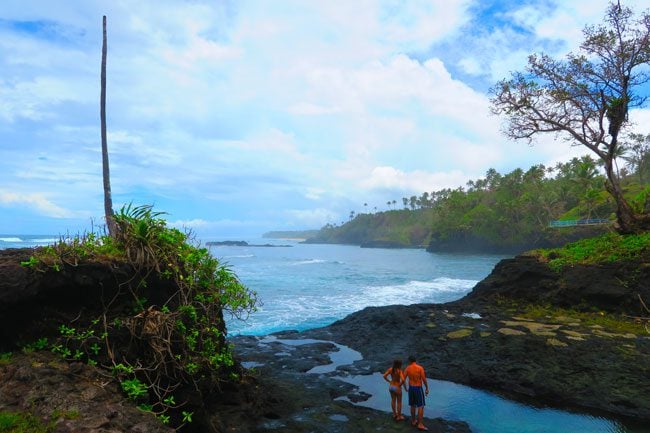
My own private island
I wasn’t doing all that much in Lalomanu Beach, so I decided to not do much somewhere else for a few days. I called the family that mans Namua Island and ten minutes later, a small boat made the journey across the strait to pick me up.
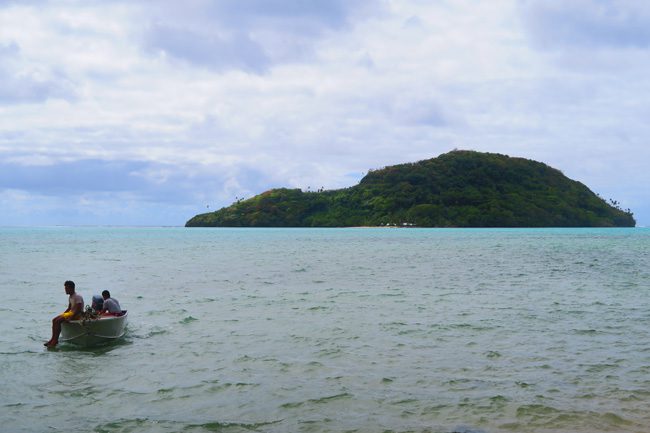
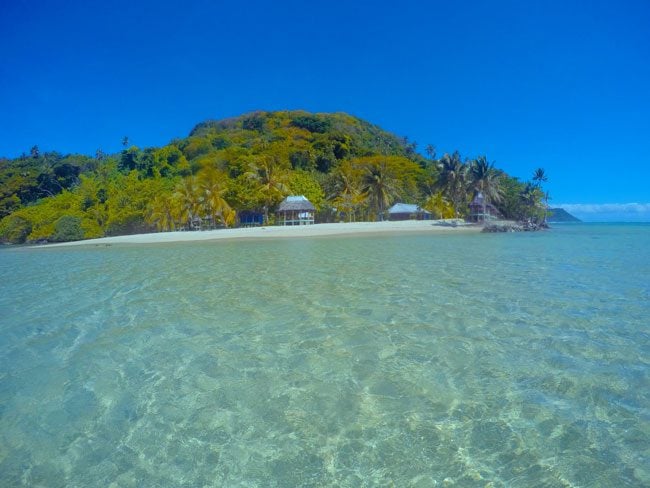
Namua Island is a tiny drop of land just off Upolu but it feels like a world away. Aside from a few family members that operate the beach fales, there’s nobody living here – and it sure feels that way. All the guests had already checked out a few hours before I arrived, so I had the entire place all to myself.
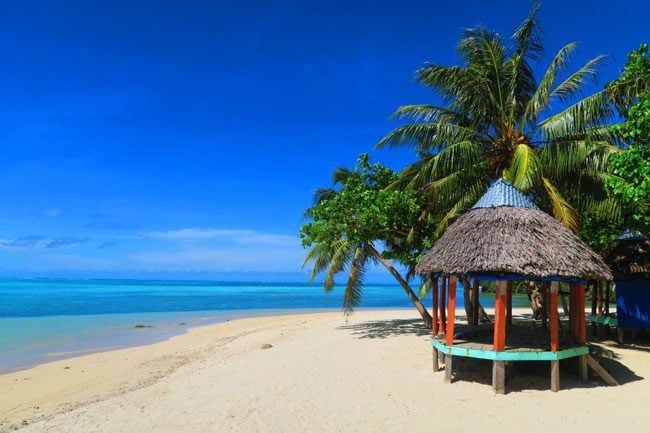
I was assigned a cute open fale at the center of the beach, with palm trees providing the shade and songbirds providing the entertainment (here’s what it sounded like). You come to Namua Island to disconnect. There’s no electricity or hot water – but that’s OK considering how beautiful this place is.
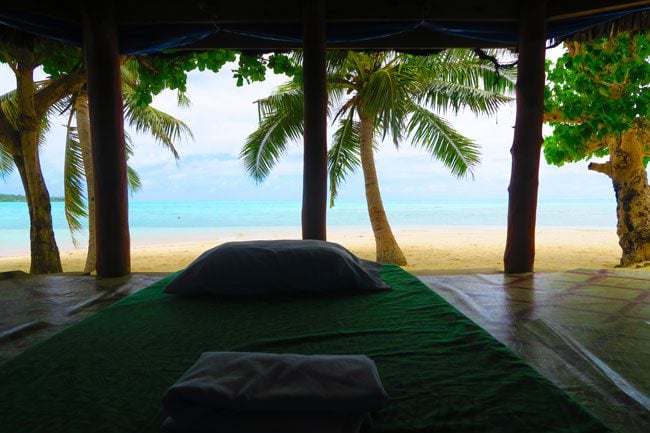
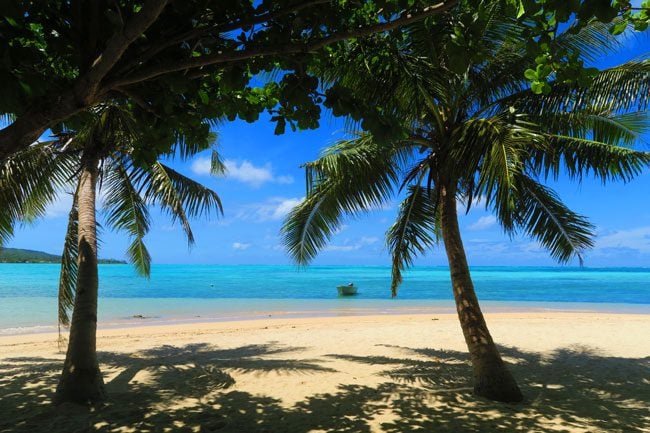
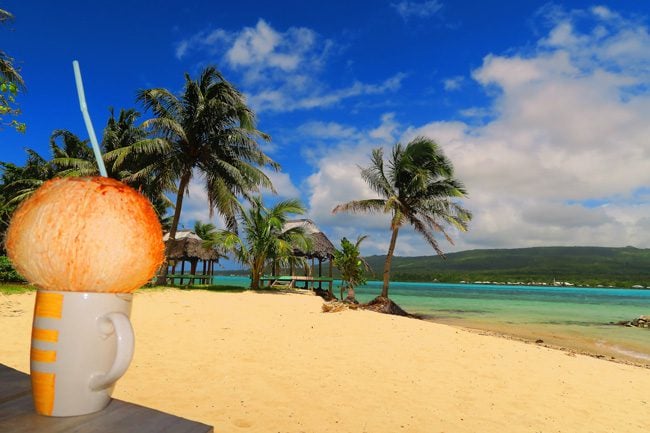
Despite the million-dollar view from my fale, I felt obliged to go for a round of snorkeling. The water off the beach is super clear and super shallow. I was told turtles often come to feast on the seagrass just by the beach but all I found in my two days were these guys. No complaints on my part.
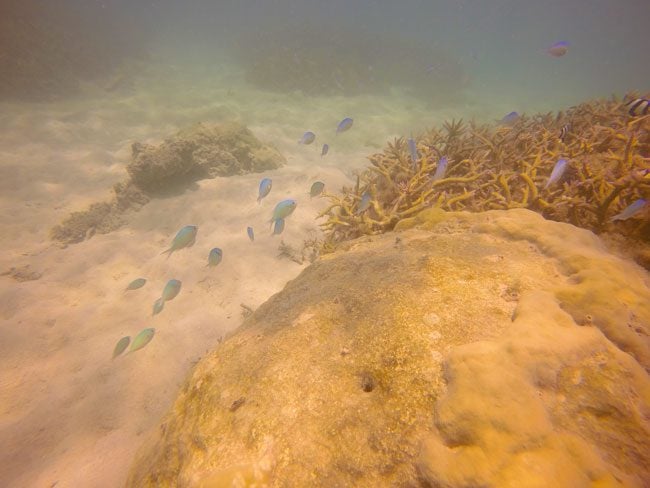
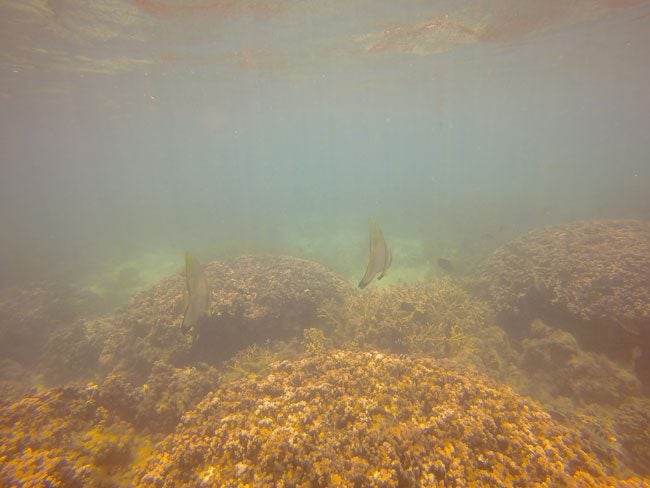
The fun doesn’t stop when the sun sets. In fact, it just begins. The twilight show in Namua Island is memorable. Blue, yellow, orange, pink and purple – all mix together to provide one last encore before it’s time to vacate the stage for the stars.
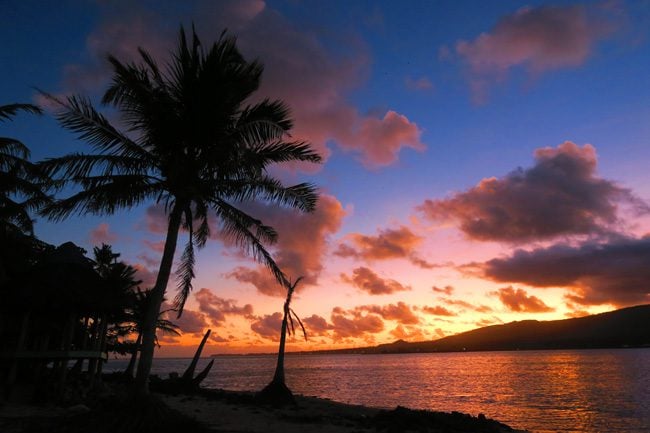
As the sun begins to set and the stars begin to shine, there’s another changing of the guard. The birds, tired from the day’s singing, make way for the bats to take center stage. They begin their ‘day’ by circling the skies high above the island as if warming up before the night’s hunt. And when the sun is finally somewhere else out west, millions of stars fill up the night’s sky – in classic South Pacific fashion.
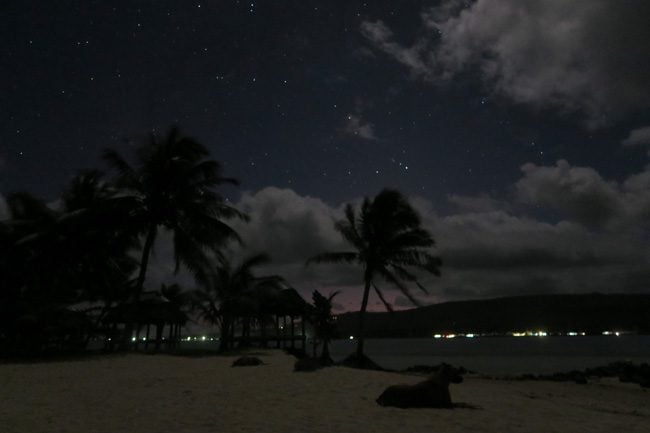
At some point after dinner, the few staff headed back to the mainland for a few hours to charge their phones and catch up with family – leaving me completely alone on the island! It was just me, two friendly dogs and the stars in the night sky.
The following morning, I woke up early to catch the sunrise. Still in the dark, I headed up the steep trail to the top of the island together with the two dogs that wouldn’t leave my sight. I suddenly noticed the forest floor seems to move all the time and after standing still for a few seconds, I realized that I was surrounded by hundreds of coconut crabs. These cute little crustaceans prefer the forest to the sea and have a constant craving for… coconuts. The coconut crab miraculously finds ripe coconuts on the forest floor, climbs high up a tree with the heavy load secured in its claws, and finally drops it down to the ground – hopefully cracking it open in the process.
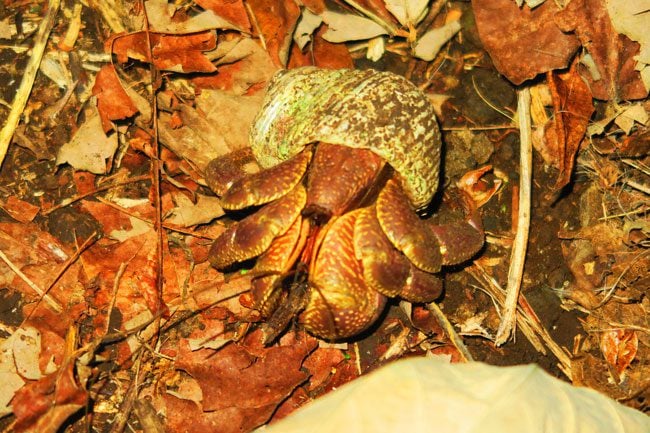
Not be outdone by the late shift, the sunrise was also quite a spectacle and as I was heading back down, the birds were already warming up their vocal cords for a busy day ahead. I’m pretty sure I witnessed the first sunrise of that day on our planet since Samoa is just across the international dateline. Note to self: Google this.
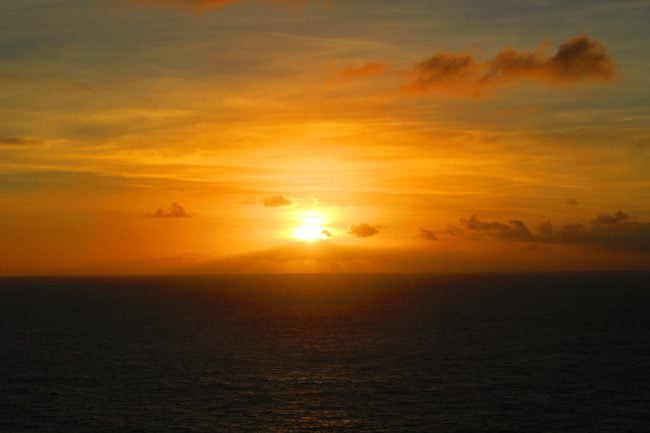
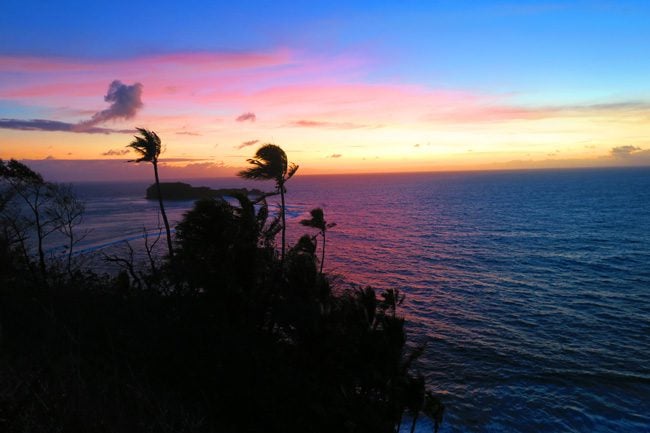
Getting to know a real Samoan family
After two nights on Namua Island, my Robinson Crusoe adventure had come to an end. I said goodbye to this tiny slice of paradise and headed to the western end of the south coast of Upolu. I made it to a tiny village in Lefaga Bay called Savaia, and checked into Le Valasi’s Beach Fales. I was greeted by Taula and his wife Helen, who took unbelievably good care of me over the next few days. I had just arrived as a big group of school children left and I was once again the only guest around. This gave me the opportunity to get to know the lovely couple, their five children and the village life (and their dial-up internet – yes, it’s still around folks).
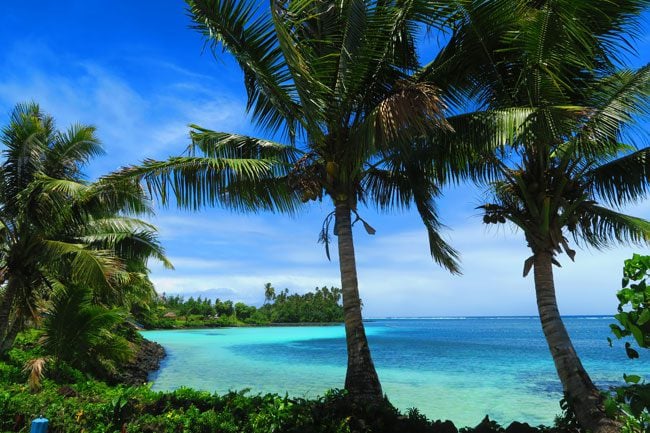
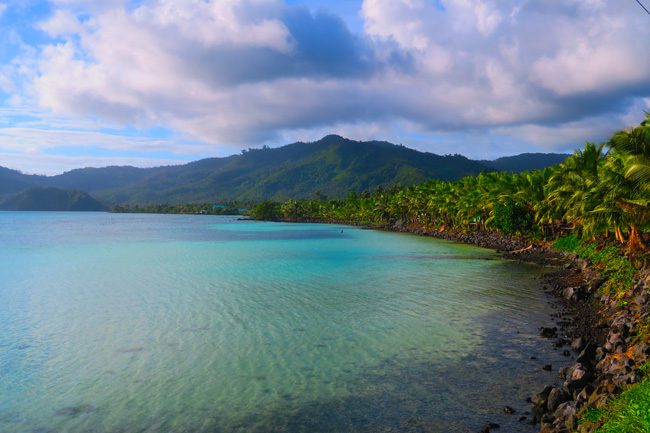
Savaia Village is tiny and most of its residents are related. Aside from the church, the local shop and the beach, there’s not much happening here and life is just so simple in the sweetest way. Most families have big backyards that are more like small farms. They grow whatever they can and supplement what they can’t with imported goods. It’s not uncommon to find mango, taro, banana, papaya, breadfruit and of course coconut – all growing in the back. Lots of chickens also call this place home. By your second night, you get used to the cockaldoo-da-dooing in the wee hours of the morning. Samoans also like to stay close to their loved ones even when they depart this life. It’s not uncommon to see a grave or two in the front lawn.
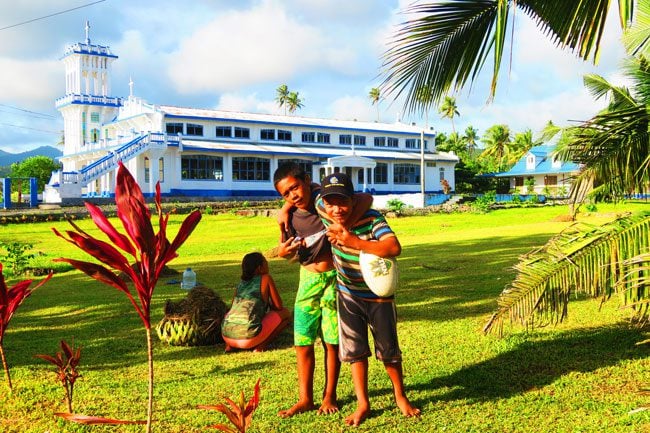
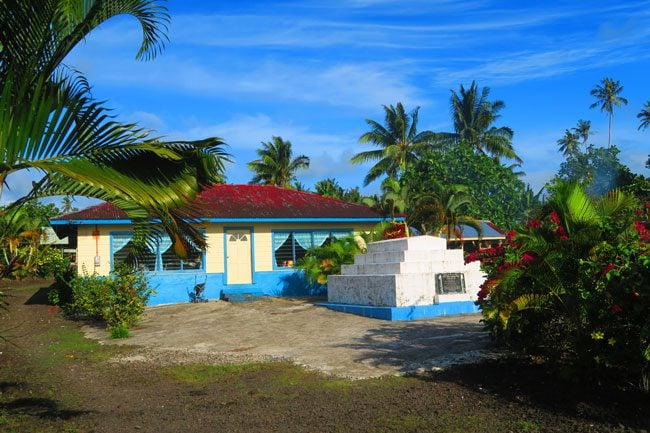
Savaia is also blessed with the Giant Clam Beach, which just happened to be across the road from my fale. How convenient. They don’t call it the Giant Clam Beach for no reason. These babies are massive, and they come in different colors too! Fortunately, the giant clams are protected by a marine conservation area but unfortunately, they are not protected from the Crown of Thorn Starfish – a scary-looking fellow that can devastate a reef if not removed in time by the locals.
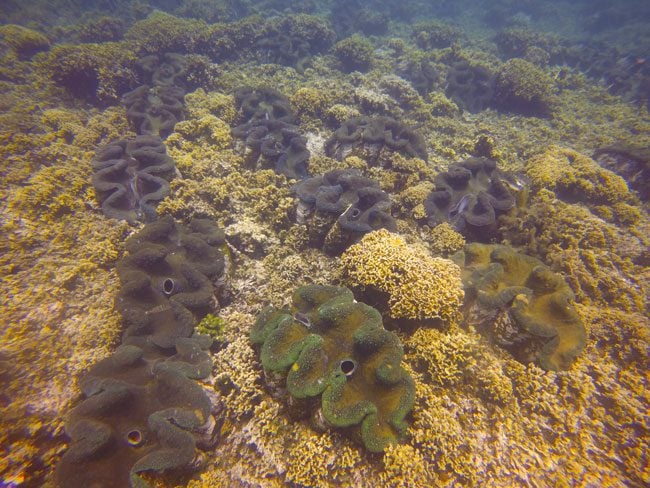
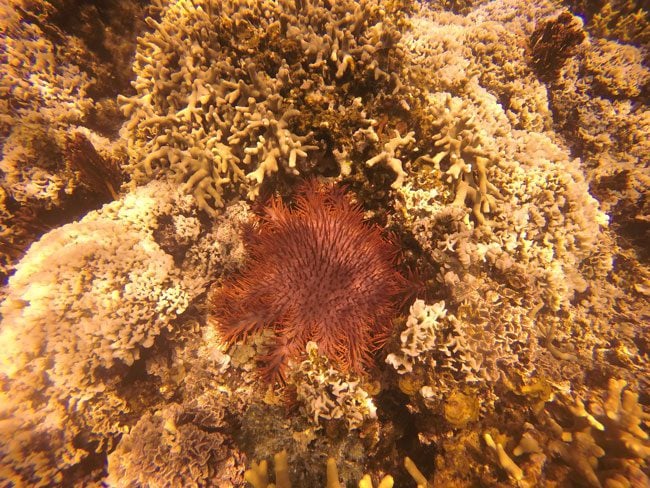
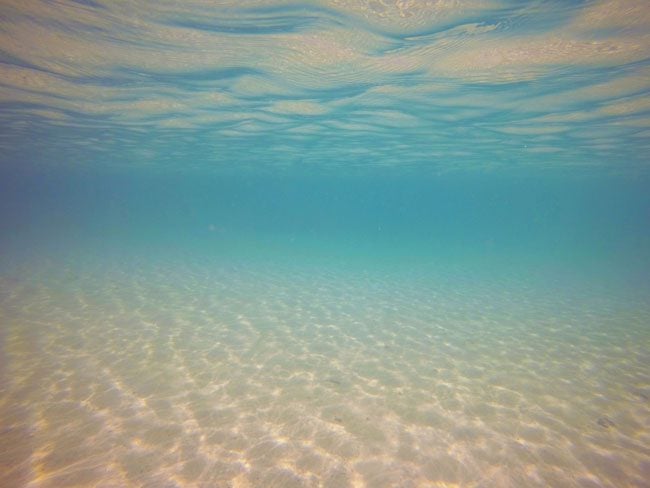
Sunsets in Savaia were once again spectacular and the great thing is that I could enjoy the while having dinner. I haven’t seen such sunset colors since visiting the Australian Outback more than a decade ago.
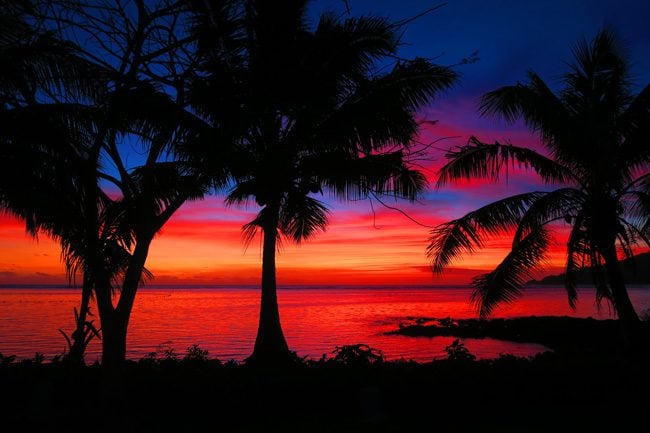
I was always accompanied by either Helen or Taula during dinner, and this gave me a great chance to get to know a real Samoan family. It turns out that Taula is an Orator or Talking Chief as it is sometimes known. He’s got to represent the village in ceremonies and in negotiations with other villages. He even showed me his special chief gear and traditional Samoan tattoo (tautau) that I learned about in Apia.
Return To Paradise
During the days in Savaia, I was fortunate to have a bicycle at my disposal and check out the beautiful beaches around the village. I started things easy with a quick ride to the neighboring beach, known as the Return To Paradise Beach. This beautiful beach was made famous by the 1953 film of the same name, starring Garry Cooper – shot right here.
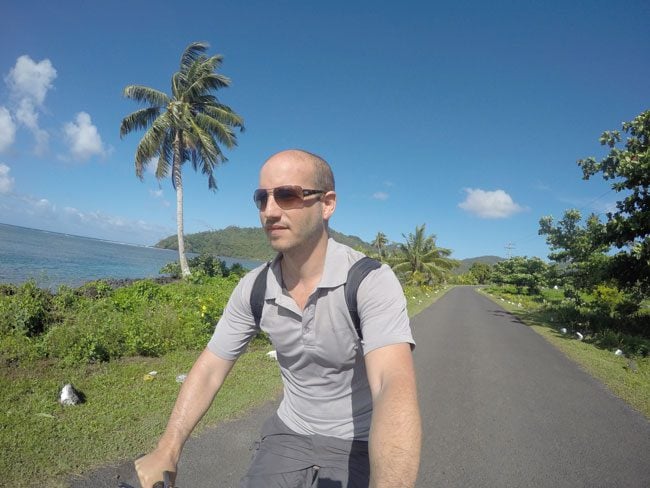
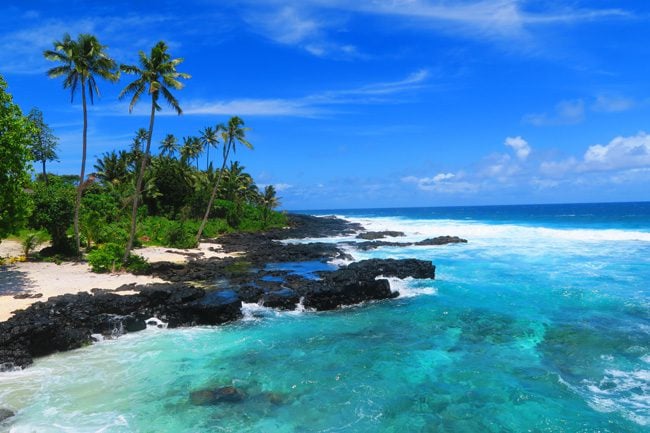
These days, there’s a fancy resort here that just happens to have a modern gift from God in Samoa – a wifi hotspot! This cute little beach hut is where I wrote the previous post. Not bad ah? Keep in mind that the Internet is super expensive in Samoa and you sometimes need to bike a few kilometers to find some – so I hope you are enjoying these posts.
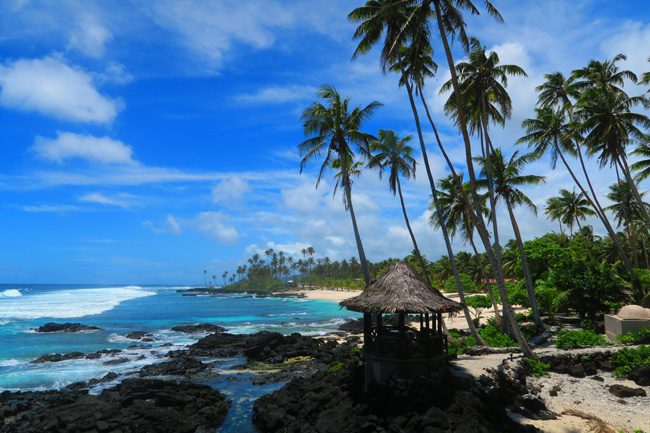
The following day, I was really in for a challenge. What I wouldn’t go through just to find that ‘perfect’ beach! I started out with a long ride on the main road to Salelologa Village. To get to the beach, it’s another 5 km’s via tough dirt roads that are mostly downhill. I knew I would pay the price coming back… Mind you, it’s a humid 30 degrees and there’s still another beach to hunt down after this one.
But let’s worry about that later, OK? I finally made it to Salamumu Beach, one of the nicest tropical beaches in Samoa. The water is blindingly turquoise and there’s yet another resort over here that was just perfect because I really needed a cold beer.
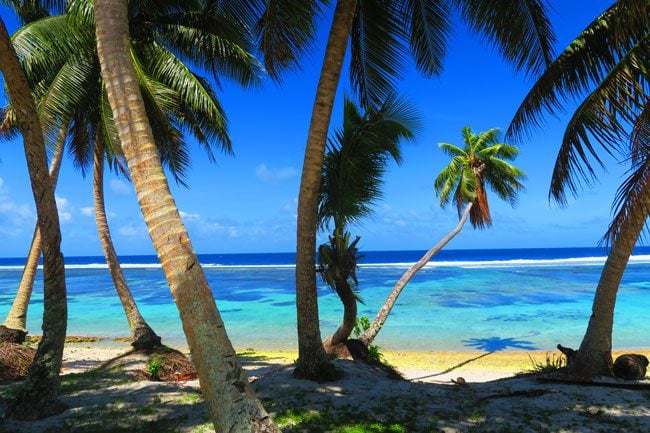
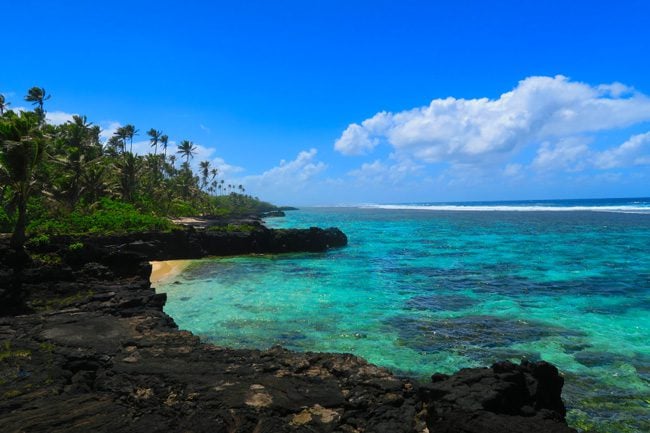
Cash is King
After drying off from the sweaty ride to Salamumu Beach, I was inevitably faced with having to ride back uphill to my next stop, a mere 8 km’s away. I suddenly remembered that one of my teachers in business school taught us that ‘cash is king’ and I decided to try my luck with the first guy that had a pickup truck. After meeting each other halfway on the price, my bike was in the back and I was on my way to the main road. This was a brilliant move!
Back on the bike and back on the road, I reached the turnoff to Matareva Beach. The dirt road leading to the beach was beautiful, passing through endless coconut plantations.
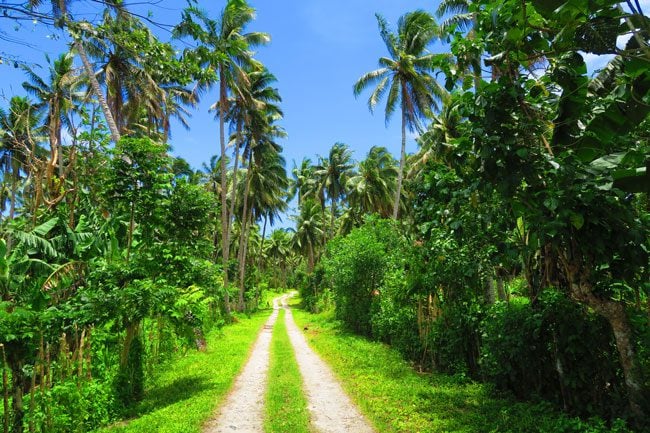
Matareva Beach was simply superb. Rugged in some areas and super secluded in others, I found my own little spot and killed a few hours. The southern coast of Upolu has some amazing beaches, each worthy of its own postcard.
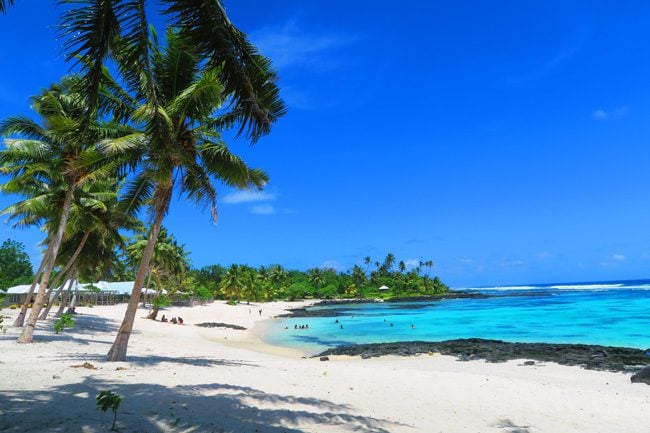
Sunday in Savaia
My last day in Savaia was a Sunday and it couldn’t come at a better time. Sunday is a day of rest that is diligently observed in Samoa. This is even truer in Savaia Village, where no activity is allowed on Sunday – even swimming.
I was woken up bright and early by this cute little boy named Loveni. He’s 11 years old, the son of Helen and Taula – and has the incredible talent of having a logical answer to any question. So eloquent this boy is. Probably gets it from his father, the Talking Chief.
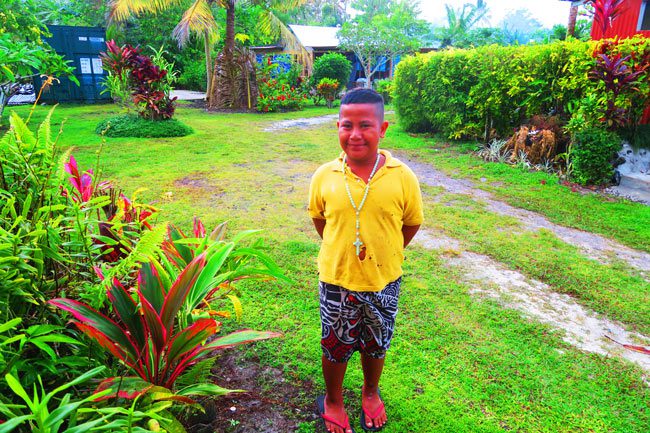
Loveni heard that I was curious about the Sunday tradition of the Umu meal, which I described in detail in the last post. So he woke me up at 7 am on and took me a few houses down the road to his cousin’s place. Smoke coming out of Samoan homes on a Sunday should raise no alarm. The Umu takes time to prepare so it’s best to get the fire going early.
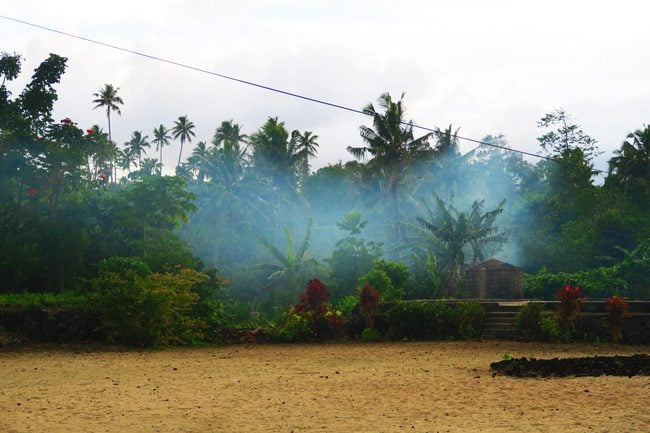
Why are Samoan men so strong?
I was greeted by Otto John and Tui, who were already busy peeling coconuts and gathering Taro leaves for the palusami – the coveted coconut cream dish. Peeling the coconut and scraping it is really hard work and there’s a precise technique to it. Loveni and Otto John gave me a quick lesson and I had a go with a few coconuts. I now understand why Samoan men are so strong.
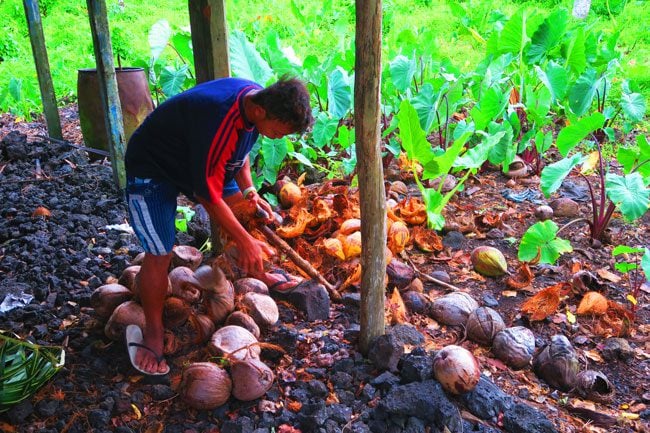
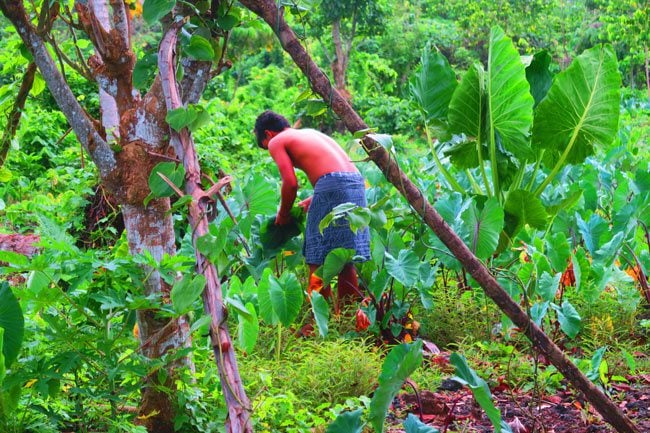
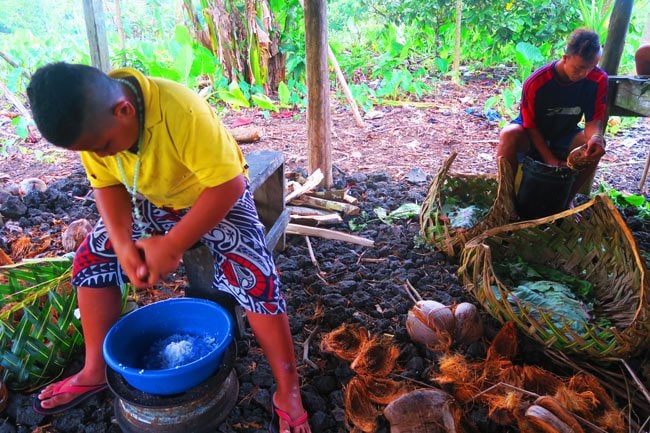
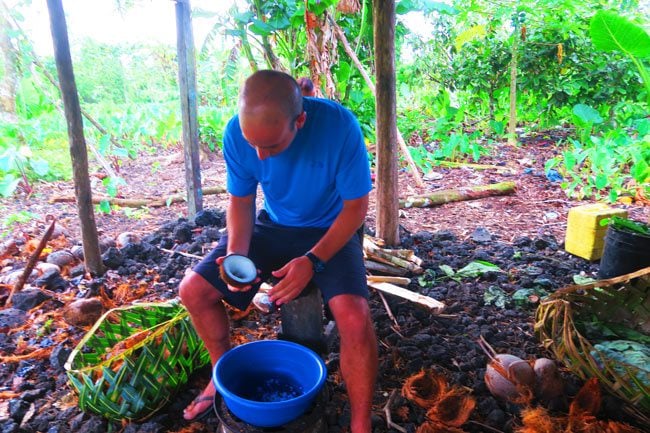
Tui started whipping up the fire, using the coconuts Loveni and I scraped along with lava rocks. It was amazing to see how the family was working together to prepare the special meal, truly in Fa’a Samoa – the Samoan Way!
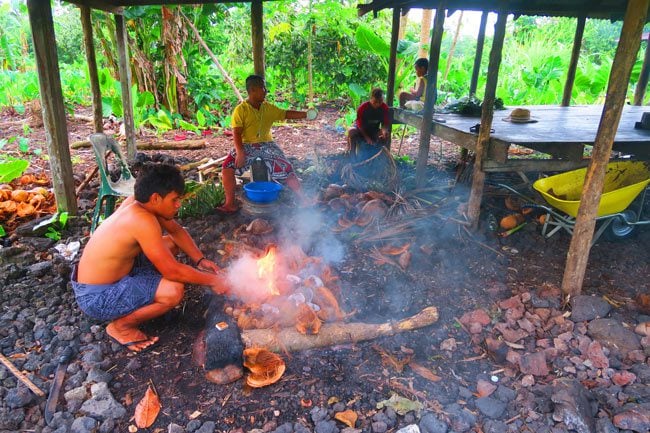
As church bells were starting to sound, Loveni relieved me of my duties and we went back to the fale to put on our Sunday clothes.
Praise the Good Lord
Church time is one of the highlights of the week in Samoa. Folks put on their finest clothes and head to church for some praying and singing. The Pasteur even translated his sermon into English in my honor and it was quite a surreal experience, even for a non-Christian guest.
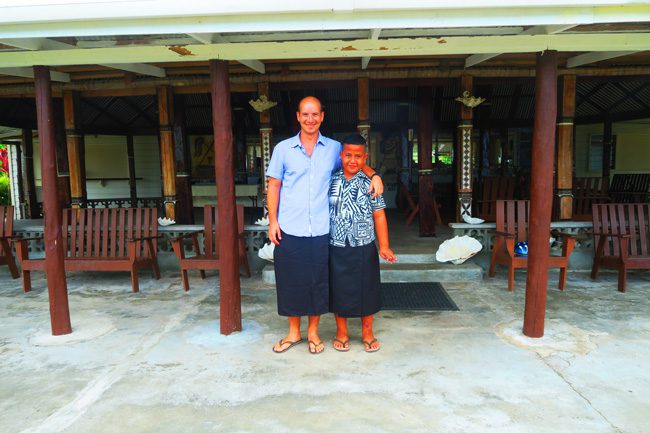
With the church service over, the entire village was smelling like a giant BBQ. Folks were rushing back home for the Umu.
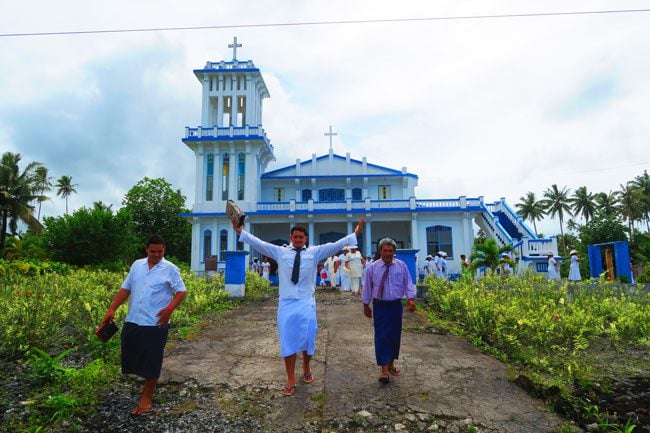
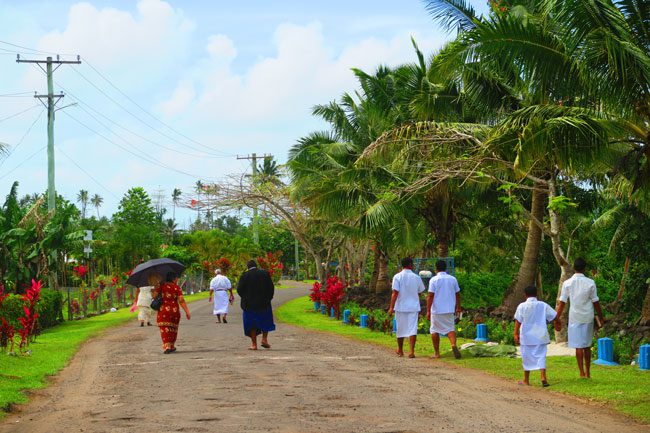
The food was delicious and plentiful. The family teamwork did not end there though, with members taking turns at keeping the flies away. I then proceeded to take a much-needed Sunday nap and the extended family proceeded to hours of chatting and laughing to end their week.
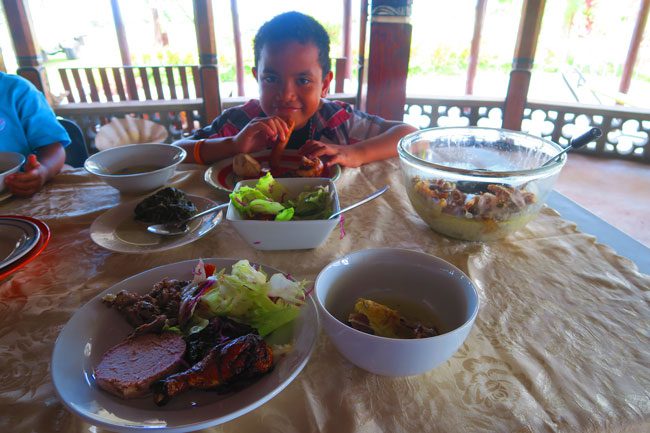
What’s next?
I had an amazing local experience in Savaia and I already miss my hosts. But it’s time to catch the ferry and head off to Savaii Island. Savaii is Samoa’s largest island but only has a fraction of the already small population. It’s known for its dramatic natural beauty, defined by centuries of volcanic activity. That’s what we’ll explore in the next update from the South Pacific!
– My visit to Upolu Island in Samoa has been generously assisted by the Samoan Tourism Authority –
